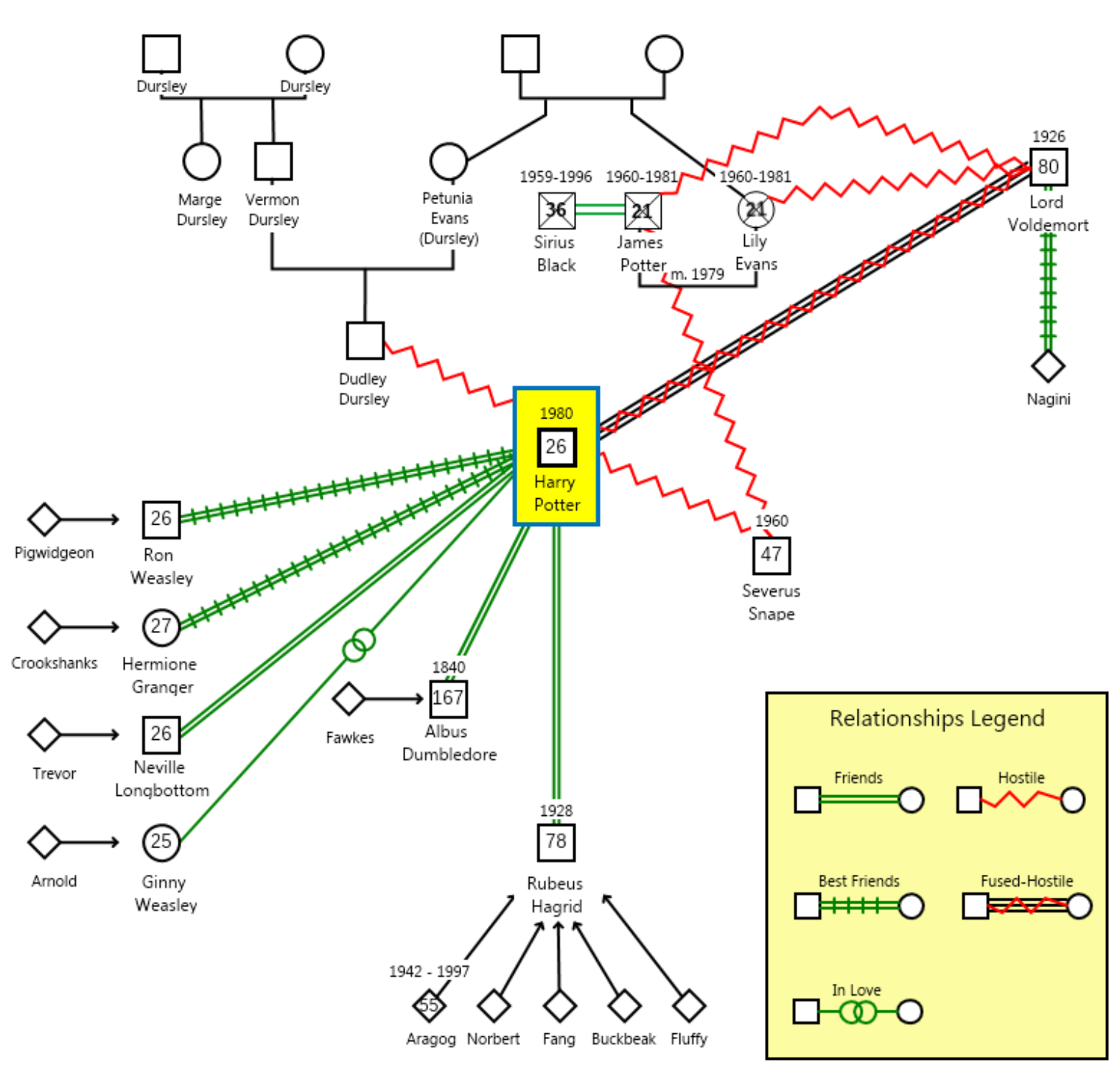Genograms are amongst the youngest members of the diagramming family, with a starting use in 1985. Although they are used to describe families and blood relatives connections, genograms greatly differ in look and purpose from the
family tree diagrams. The main task of genograms is to visualize the relationships between the members within a family on a very deep level, as well as the genetic diseases which may be transferred from/to a family member.
Types of genograms
Despite that genograms are not strictly categorized on different types, most of them contain three layers. The first layer describes the basic information related to the people in the family - marriage, divorce, children, etc. The second layer usually contains information on diseases such as heart condition, diabetes, etc. The third layer adds additional clarity of the emotional bonds and relationships, including who was in love with whom, who is obsessed by someone else, who is abusive mentally and/or physically, etc. While in some genograms all layers co-exist, sometimes diagrams are drawn separately for each of the above-mentioned purposes. Let's look at them in further detail.
Basic genograms
The most basic layer of the genogram contains the family members and the way each person is related to the rest. Unlike family trees, however, genograms contain additional information including the way people are related. This is done by specific symbols and connectors, telling the viewer if a child was miscarried, if there was an abortion, if there are twins, if someone is adopted, etc. The connector lines and shapes can also tell who is living and who has passed away, if people are married or simply living together and more. Here are some examples of the shapes and their meanings:
Health information genograms
Genograms with health information are often drawn to serve as a starting point for diagnosing a disease or even for predicting a possible illness that a child may inherit genetically. They are often used by psychologists, psychiatrists, and physicians. The predefined symbols of genograms contain basic information whether a member of the family has a physical or mental illness, or even if there is a suspicion of a drug or alcohol abuse. If needed, the creator of the diagram can add additional, custom-made shapes that contain more specific information and describe them in a legend. Common custom shapes are ones, defining heart conditions, diabetes, and others.
Relationship genograms
The relationships layer of genograms is usually added to give more in-depth information about the relationships between different family members. It can help a therapist learn a lot about a family and see behavioral patterns, their origin and spread amongst the members, as well as predict problems that may occur in the future.
Example
To get a complete idea of a genogram, you can have a look at this example below.



